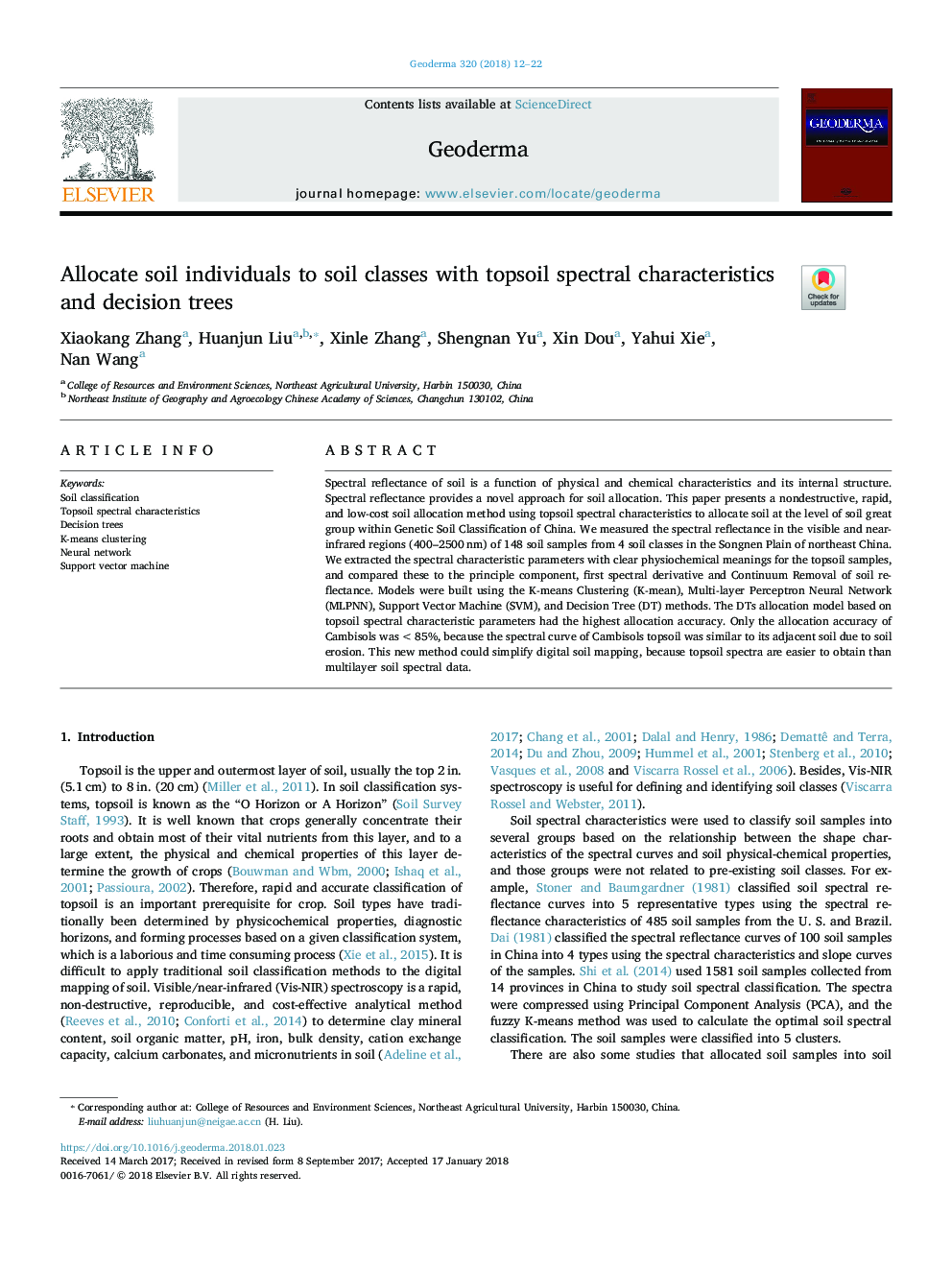| Article ID | Journal | Published Year | Pages | File Type |
|---|---|---|---|---|
| 8894113 | Geoderma | 2018 | 11 Pages |
Abstract
Spectral reflectance of soil is a function of physical and chemical characteristics and its internal structure. Spectral reflectance provides a novel approach for soil allocation. This paper presents a nondestructive, rapid, and low-cost soil allocation method using topsoil spectral characteristics to allocate soil at the level of soil great group within Genetic Soil Classification of China. We measured the spectral reflectance in the visible and near-infrared regions (400-2500â¯nm) of 148 soil samples from 4 soil classes in the Songnen Plain of northeast China. We extracted the spectral characteristic parameters with clear physiochemical meanings for the topsoil samples, and compared these to the principle component, first spectral derivative and Continuum Removal of soil reflectance. Models were built using the K-means Clustering (K-mean), Multi-layer Perceptron Neural Network (MLPNN), Support Vector Machine (SVM), and Decision Tree (DT) methods. The DTs allocation model based on topsoil spectral characteristic parameters had the highest allocation accuracy. Only the allocation accuracy of Cambisols was <85%, because the spectral curve of Cambisols topsoil was similar to its adjacent soil due to soil erosion. This new method could simplify digital soil mapping, because topsoil spectra are easier to obtain than multilayer soil spectral data.
Related Topics
Physical Sciences and Engineering
Earth and Planetary Sciences
Earth-Surface Processes
Authors
Xiaokang Zhang, Huanjun Liu, Xinle Zhang, Shengnan Yu, Xin Dou, Yahui Xie, Nan Wang,
